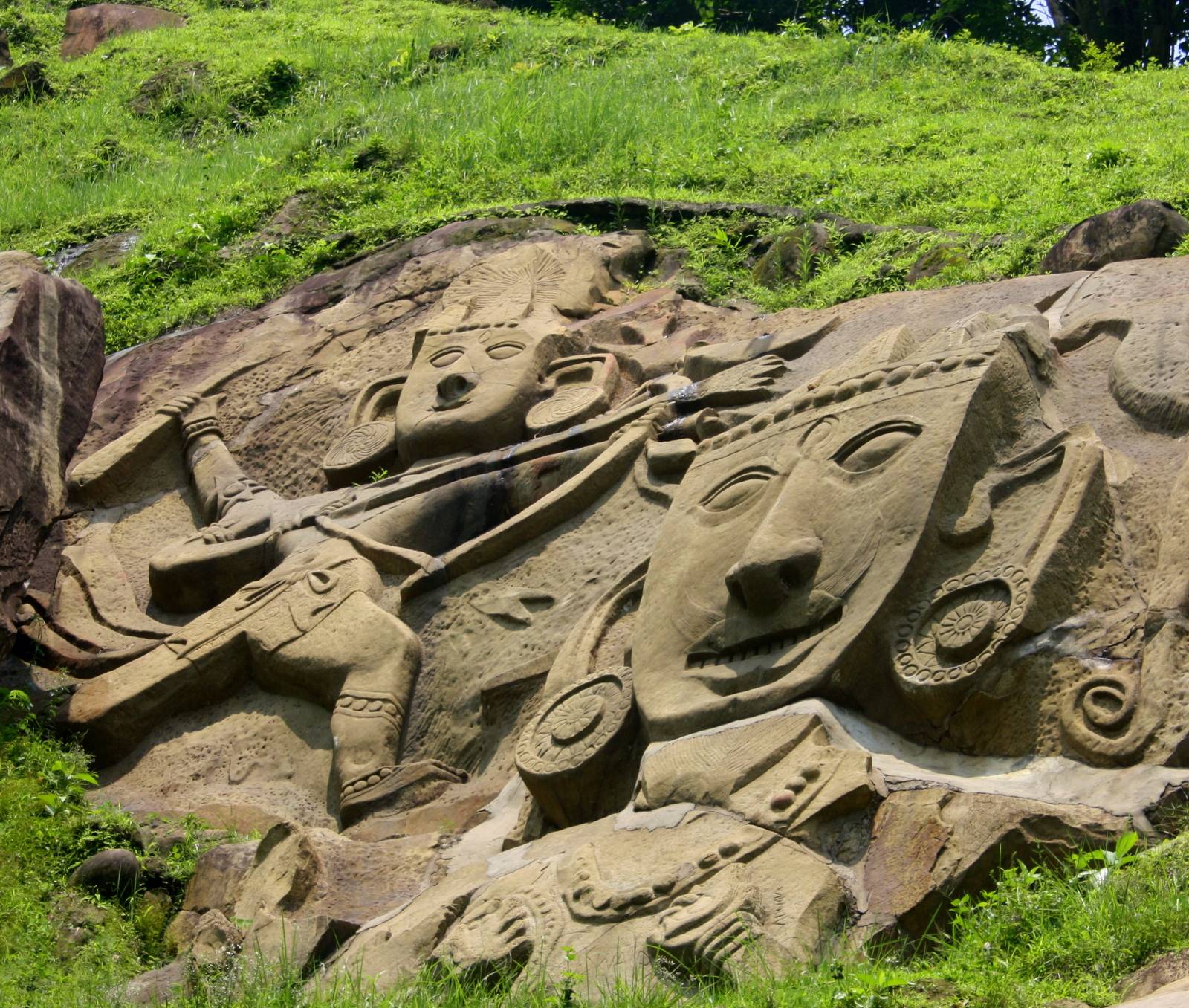Unakoti is a historic site in Tripura, India, known for its colossal rock reliefs and stone carvings. The name ‘Unakoti’ means ‘one less than a crore’ in Bengali, signifying the countless sculptures present. It is a significant archaeological and religious site, featuring carvings of Hindu deities dating back to between the 7th and 9th centuries. The site is shrouded in mystery, with its origins and the artists who created these works largely unknown. Unakoti serves as a pilgrimage destination during the Ashokastami festival, drawing devotees and tourists alike.
Get your dose of History via Email
Historical Background of Unakoti
Unakoti’s discovery dates back to the 20th century, although the exact year remains unclear. Local legends and oral traditions were the first to hint at its existence. The site’s creators are unknown, but it is believed to have been carved by ancient Kachari people. The Kachari were part of the Bodo-Kachari ethnic group, known for their skills in stone carving. Unakoti did not see significant habitation after its creation, but it has been a place of worship for centuries.
The site has not been the scene of any known historically significant events. However, it holds immense religious importance for Hindus. Unakoti’s rediscovery by archaeologists brought it to the attention of the wider world. Since then, it has become an important cultural and historical site in India. The government has taken steps to preserve and promote Unakoti.
Unakoti’s carvings are primarily dedicated to the Hindu god Shiva. The central figure is a giant head known as ‘Unakotiswara Kal Bhairava’. It is believed to be the largest bas-relief sculpture in India. The site also features other deities, including Ganesha, Maa Durga, and Nandi Bull carvings.
Despite its religious significance, Unakoti is not a well-documented site in historical texts. This lack of documentation adds to its mystery. The site’s remote location in the northeastern part of India has also contributed to its relative obscurity. However, this has preserved its pristine condition, away from urban development.
Unakoti’s importance lies not only in its religious significance but also in its artistic value. The carvings are a testament to the craftsmanship of ancient Indian sculptors. They provide insight into the religious practices and artistic styles of the time. Unakoti continues to be a subject of study for historians and archaeologists.
About Unakoti
Unakoti is a treasure trove of rock carvings and murals. The site is set in a lush forest, with a natural backdrop that enhances its mystical aura. The carvings are made on a hillside with a waterfall nearby, adding to the site’s natural beauty. The sculptures are made of sandstone and bear the marks of weathering over the centuries.
The methods of construction and the tools used to create Unakoti’s carvings are not well-documented. However, the precision and intricacy of the work suggest the use of advanced techniques for the time. The carvings are a mix of bas-relief and rock-cut architecture. This combination is rare and showcases the versatility of the artists.
The architectural highlights of Unakoti include the massive central Shiva head and the Ganesha figures. The carvings also feature a variety of Hindu deities, animals, and floral patterns. The site’s layout suggests it was designed for religious gatherings and rituals. The natural spring flowing through Unakoti is believed to have sacred properties.
Unakoti’s murals are another significant aspect of the site. They are painted with natural pigments, which have faded over time. The murals depict various mythological scenes and are an integral part of the site’s religious narrative. The combination of carvings and murals creates a comprehensive visual story.
The preservation of Unakoti is a challenge due to its exposure to the elements. Conservation efforts are ongoing to protect the site from further deterioration. The government and local communities are involved in these efforts, recognizing the site’s cultural and historical importance.
Theories and Interpretations
Several theories exist about Unakoti’s purpose and origins. One popular legend tells of a curse that turned an assembly of gods into stone. This myth explains the site’s name and the vast number of carvings. However, there is no historical evidence to support this tale.
Some scholars believe Unakoti was a hermitage for ascetics. The secluded location and the presence of religious figures support this theory. The site may have been a retreat for meditation and spiritual practices. Yet, this remains speculative without concrete evidence.
Mysteries surround Unakoti, particularly regarding the identity of its creators. The lack of historical records makes it difficult to ascertain who carved these figures. The Kachari people are the most likely candidates, but this is based on circumstantial evidence.
Historians have attempted to match aspects of Unakoti’s carvings to known historical records. These efforts have provided some context but have not led to definitive conclusions. The dating of the site has been challenging due to the absence of inscriptions or datable artifacts.
Carbon dating and other scientific methods have been employed to estimate the age of Unakoti’s carvings. These studies suggest the carvings were made between the 7th and 9th centuries. However, the exact timeline remains a subject of debate among experts.
At a glance
Country: India
Civilization: Likely created by the Kachari people
Age: Estimated between the 7th and 9th centuries AD
Conclusion and Sources
Reputable sources used in creating this article:
- Wikipedia: https://en.wikipedia.org/wiki/Unakoti

